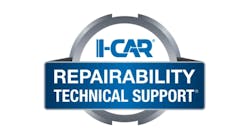Medium- and heavy-duty trucks poised for aftermarket opportunity
The automotive aftermarket has long been primed for excellent business opportunities. Back when the first Model T rolled off the assembly line, parts eventually would break down and savvy entrepreneurs were there to provide replacements.
Of course, what’s true for the light-duty vehicle market is also true for the medium- and heavy-duty markets – Gross Vehicle Weight (GVW) Class 4–8. These commercial vehicles – semis, cement trucks, buses, delivery vans, utility vehicles, fire trucks, ambulances, large pickup trucks and even motor homes – roll off the assembly line and immediately are subject to wear and tear. Just like in cars and light trucks, parts break, and the replacement parts niche is filled by a variety of aftermarket organizations.
However, that’s where the similarities to the light-duty vehicle market end. There is a level of complexity and customization in the medium- and heavy-duty truck industry that is important to track, understand and plan for. What is the mix of vehicles in these classes? As of Q2 2013, it is roughly a 60-40 split between heavy-duty (GVW 7–8) and medium-duty (GVW 4–6) across the United States.
|
GVW |
Market share |
|
Class 4 |
14.7% |
|
Class 5 |
8.6% |
|
Class 6 |
15.9% |
|
Class 7 |
15.1% |
|
Class 8 |
45.8% |
How have sales been in these segments recently? While the medium- and heavy-duty vehicles in operation comprise a smaller number of vehicles than the car and light-truck market, there are still several attributes that make it a viable business opportunity. First, sales of new vehicles in recent years are low compared with the premium sales volumes reached in the mid-2000s.
At nearly 21 percent in combined medium- and heavy-duty trucks, Ford Motor Company holds the most market share overall. Of course, a closer look reveals that this is almost exclusively in the medium-duty truck market (GVW Class 4–6). Ford has nearly 46 percent of the market in this segment, well ahead of its nearest competitors, International and Isuzu.
However, in the heavy-duty market (GVW Class 7–8), Ford is practically nonexistent. Freightliner and International have nearly identical shares at about 21.5 percent; Kenworth and Peterbilt are competing for third and fourth place, with slightly more than 10 percent market share each.
|
Total market share for Gross Vehicle Weight Classes 4–8 |
|
|
Make |
Market share |
|
Ford |
20.9% |
|
International |
17.5% |
|
Freightliner |
15.6% |
|
Peterbilt |
6.5% |
|
Kenworth |
6.3% |
|
Mack |
5.3% |
|
GMC |
4.6% |
|
Volvo |
3.6% |
|
Isuzu |
3.2% |
|
Chevrolet |
3.1% |
|
Other |
13.4% |
The race for engine market share is extremely competitive as well. The top engine manufacturers are Cummins, Caterpillar, Detroit Diesel and Navistar in the heavy class; Ford dominates in the medium class, followed by Navistar and Isuzu.
While most people equate medium- and heavy-duty trucks with diesel fuel, gasoline still powers a significant portion of the medium-duty vehicles:
|
Gross Vehicle Weight |
Diesel |
Gasoline |
Other/Unknown |
|
Class 4 |
53.2% |
46.7% |
0.1% |
|
Class 5 |
74.0% |
25.9% |
0.1% |
|
Class 6 |
71.3% |
28.5% |
0.2% |
|
Class 7 |
92.8% |
6.4% |
0.8% |
|
Class 8 |
99.2% |
0.2% |
0.6% |
All of these factors — vehicle class, manufacturer, engine manufacturer, engine type, fuel type and many more — create a highly complex aftermarket environment for medium and heavy duty trucks. Understanding these trends and how they vary in different regions can help aftermarket organizations better determine their long-term needs and help to maximize their profits.
Subscribe to Aftermarket Business World and receive articles like this every month….absolutely free. Click here.
.jpg?auto=format,compress&fit=max&q=45&w=250&width=250)



